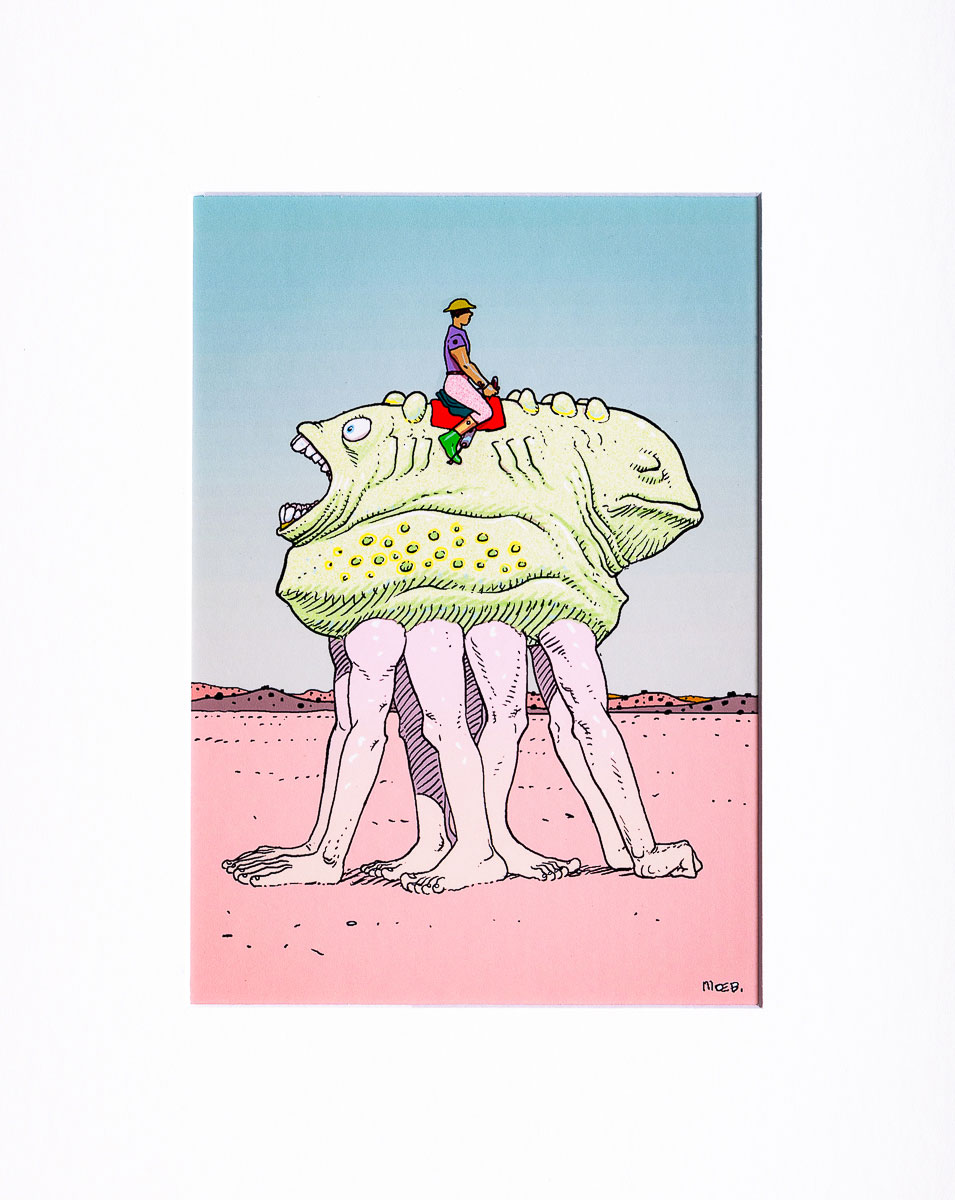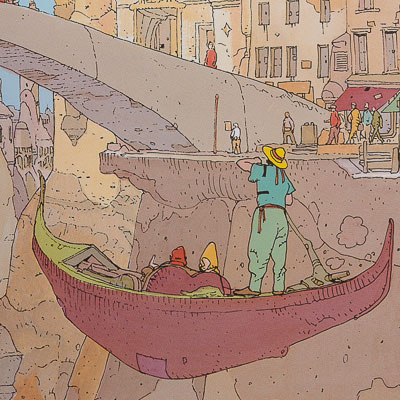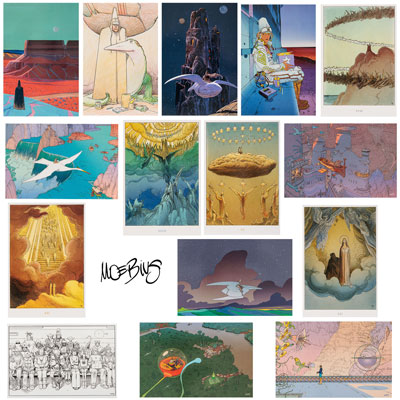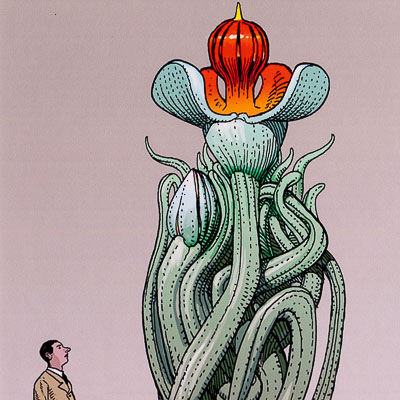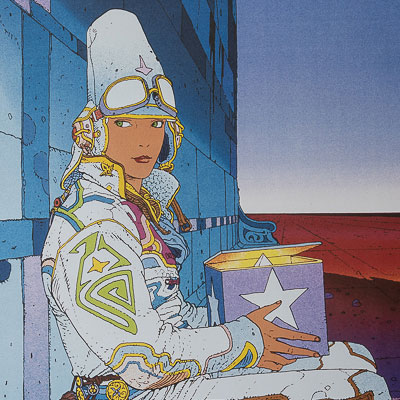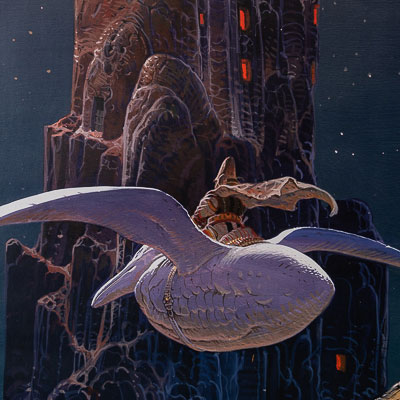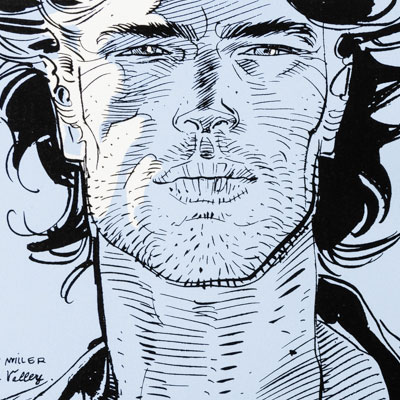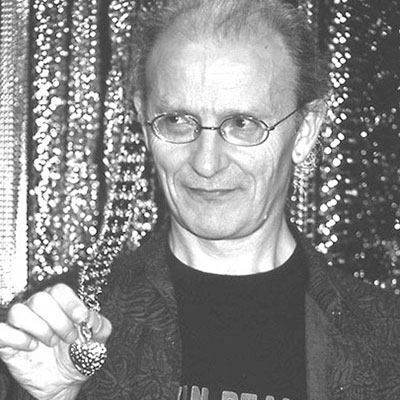Tel : (+33) 4 94 63 18 08
9am - 6pm from Monday to Saturday
All products (Moebius) Jean GIRAUD
Moebius Zagzig Pigment Print Framed
REF : MOEB-PIG-03
In stock
Only 1 in stock
Unavailable
89,00 €
Framed pigment print titled Zagzig, based on imaginary creatures from the fauna of Mars, from a bestiary drawn by Moebius.
Here we find the entire universe of the Hermetic Garageunder the impulse of the famous Major Grubert, a favorite character of the artist.
The print is framed under a 24 x 30 cm mat, with the print itself measuring 14 x 20 cm.
Delivered with a certificate from Moebius Production Editions.
Zagzig as seen by Moebius
"I acknowledge that there has been a slip-up here. What I also want to specify is that in the team, there were biogeneticists who were hired for financial reasons. These are people from Ganymede. You know, people from Ganymede are not very well liked and we know why. They rarely miss an opportunity to mock the human empire that has expanded at their expense. At that moment, I was not happy. Because the injection of human genes was originally prohibited. And the hands, the feet... I know you don't think with your feet and hands, although, I admit, it happens to me."
********************************
Frame:
The frame is made of black matte rounded wood, with a very beautiful manufacture, 3.5 cm wide and with a smooth texture.
Frame made in France.
Discover the artist
GIRAUD (Moebius) Jean
Jean GIRAUD also known as Mœbius is a French cartoonist and screenwriter and illustrator.
Coming from a modest background, he grew up, raised by his grandparents, in the suburbs of Paris. It was in the early 1950s that he became passionate about drawing. His first sketches, mainly of cowboys and Indians, are the heroes who populate the images sent by Hollywood. His father made him discover Fiction, a journal devoted to the literature of the imagination (surrealism, science fiction), this will have a lasting influence on his readings and his universe!
He did Dupperé Applied Arts between 16 and 18 years before working as an illustrator for advertising. In 1956, he published Frank and Jeremie in the monthly Far-west. From then on, he devoted himself only to comics.
He spent 9 months in Mexico where his mother resided, where he met Jijé and fell under the spell of the desert landscapes that will be predominant in his visual universe. In 1962, he became Jijé’s apprentice and worked as an inker on one of the western series Jerry Spring: The Coronado Road, published in Spirou.
In the early 1960s, he worked with Mézières, then in 1963, Jijé recommended him to Jean-Michel Charlier who was looking for a cartoonist for a western series he began to write: Le Lieutenant Blueberry. First published in Driver, it is immediately successful. 25 albums will be released (from 1965 to 2005= and there will also be 2 derivative series: Marshall Blueberry (with William Vance and Michel Rouge) and Blueberry Youth (with Colin Wilson and Michel Blanc-Dumont).
During the 1960s, he also began to illustrate SF magazines and novels, under the name of Mœbius. This name will now serve him for all his work related to anticipation. With Jean-Pierre Dionnet, Philippe Druillet and Bernard Farkas, he founded in 1975 Les Humanoids Associés which will be at the origin of the creation of Métal Hurlant magazine, which will allow the birth of a new generation of comic books, such as Enki Bilal. For his part, Giraud takes the opportunity to publish underground SF such as the revolutionary Arzach or the famous Hermetic Garage. Metal Hurlant becomes the reference of a rock, punk generation, from May 1968 that no longer recognizes itself in a France that is slow to modernize!
These new publications allow Mœbius to cross borders beyond Europe (which is never easy for cartoonists) and make his work recognized in Japan and the United States. The proposals, particularly from Hollywood, will follow very quickly. It will first be the project, unfortunately aborted, of an adaptation of Dune by Jodorowsky, with the help of Dan O'Bannon, then Alien, the eighth passenger, with Ridley Scott (and still O'Bannon), which will be producted (also related to Giger work).
In 1986, Giraud moved to Los Angeles, founded a local publishing house, worked with Marvel Comics, illustrated a Silver Surfer story, worked with James Cameron on Abyss, but his work will not be retained for the director’s final vision.
During the 1990s, he participated in the creation of a Futuroscope attraction inspired by the Hermetic Garage, drew for a stamp issue by the Post Office, and took part in numerous exhibitions, including one that paralleled his work and that of Hayao Miyazaki.
He died on March 10, 2012, at the age of 73, leaving behind the orphan comic strip of one of his greatest reformers, one of his founding fathers !
